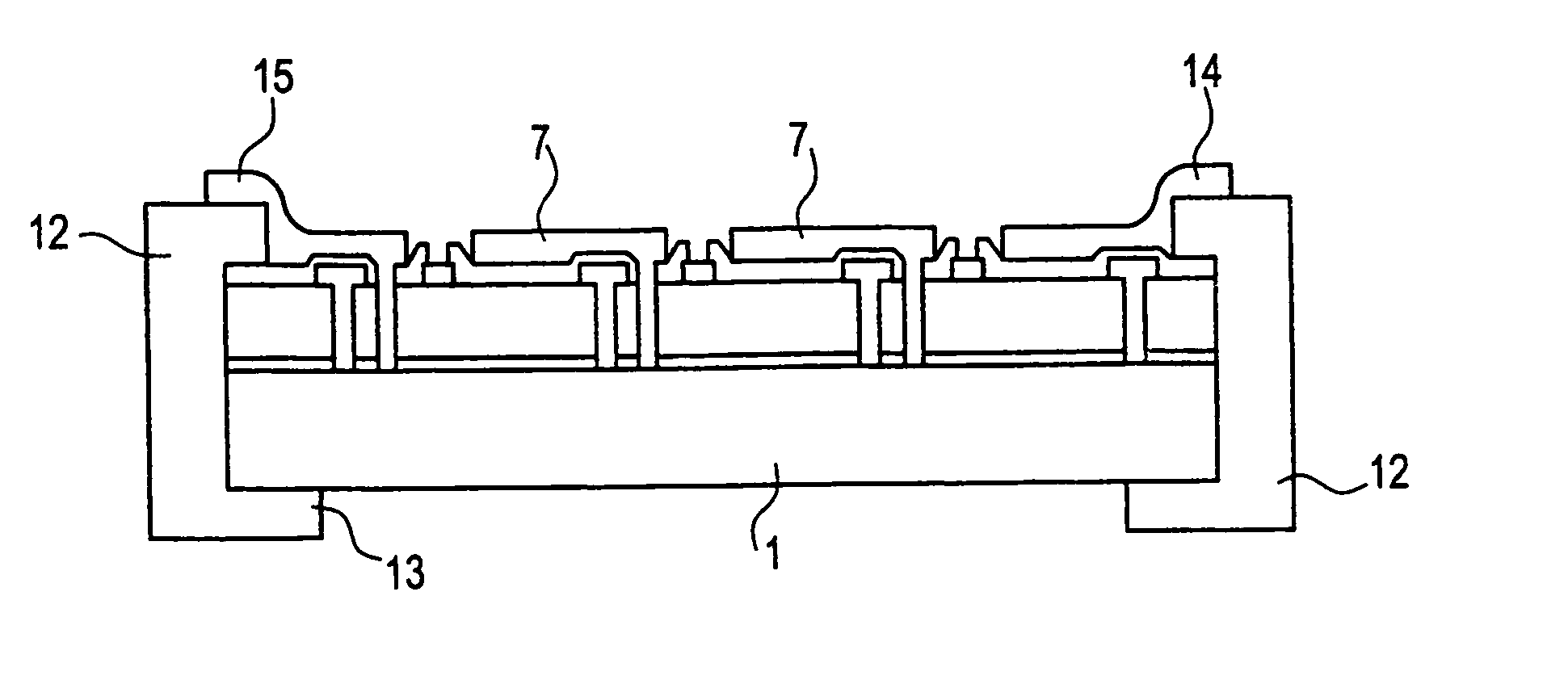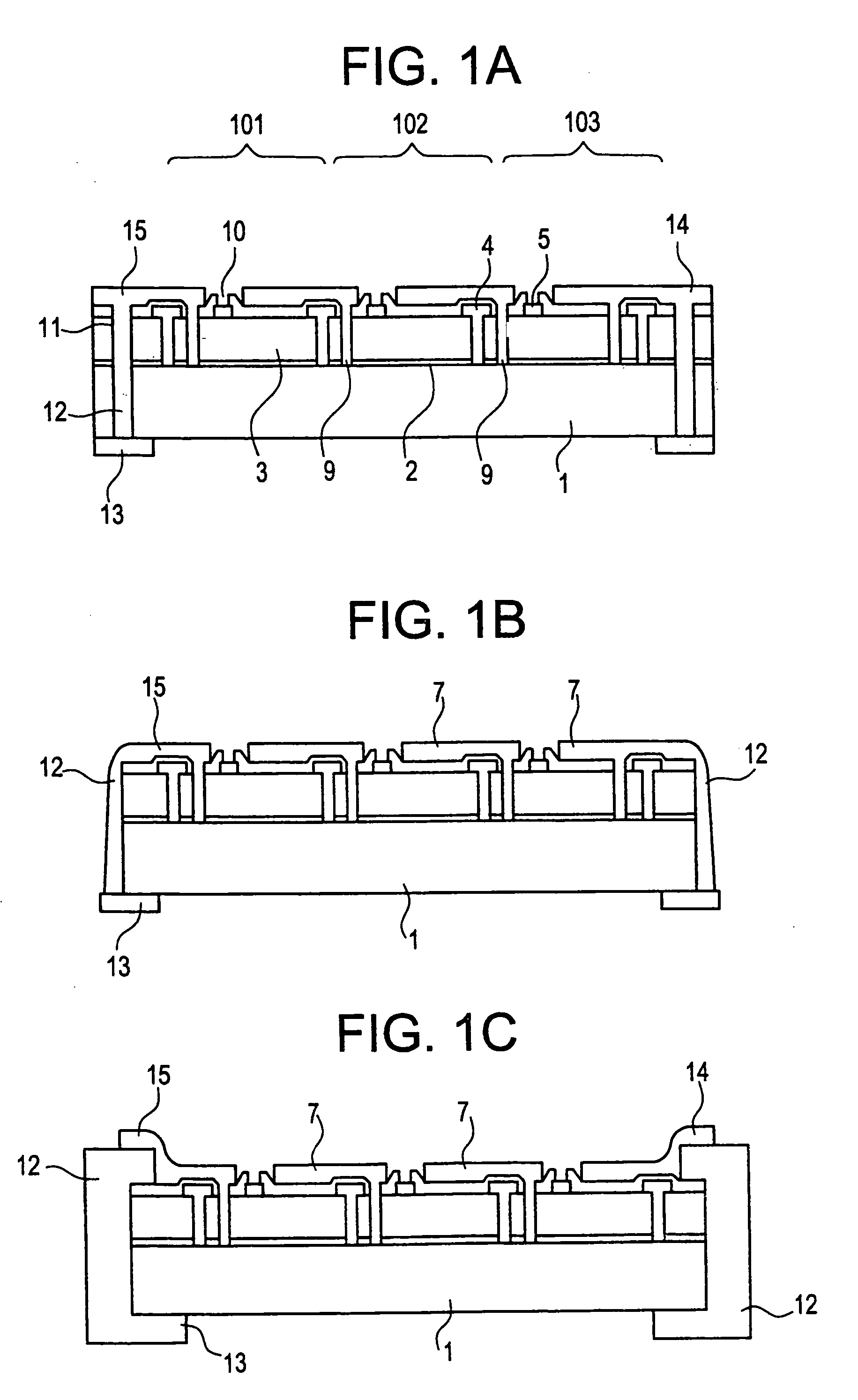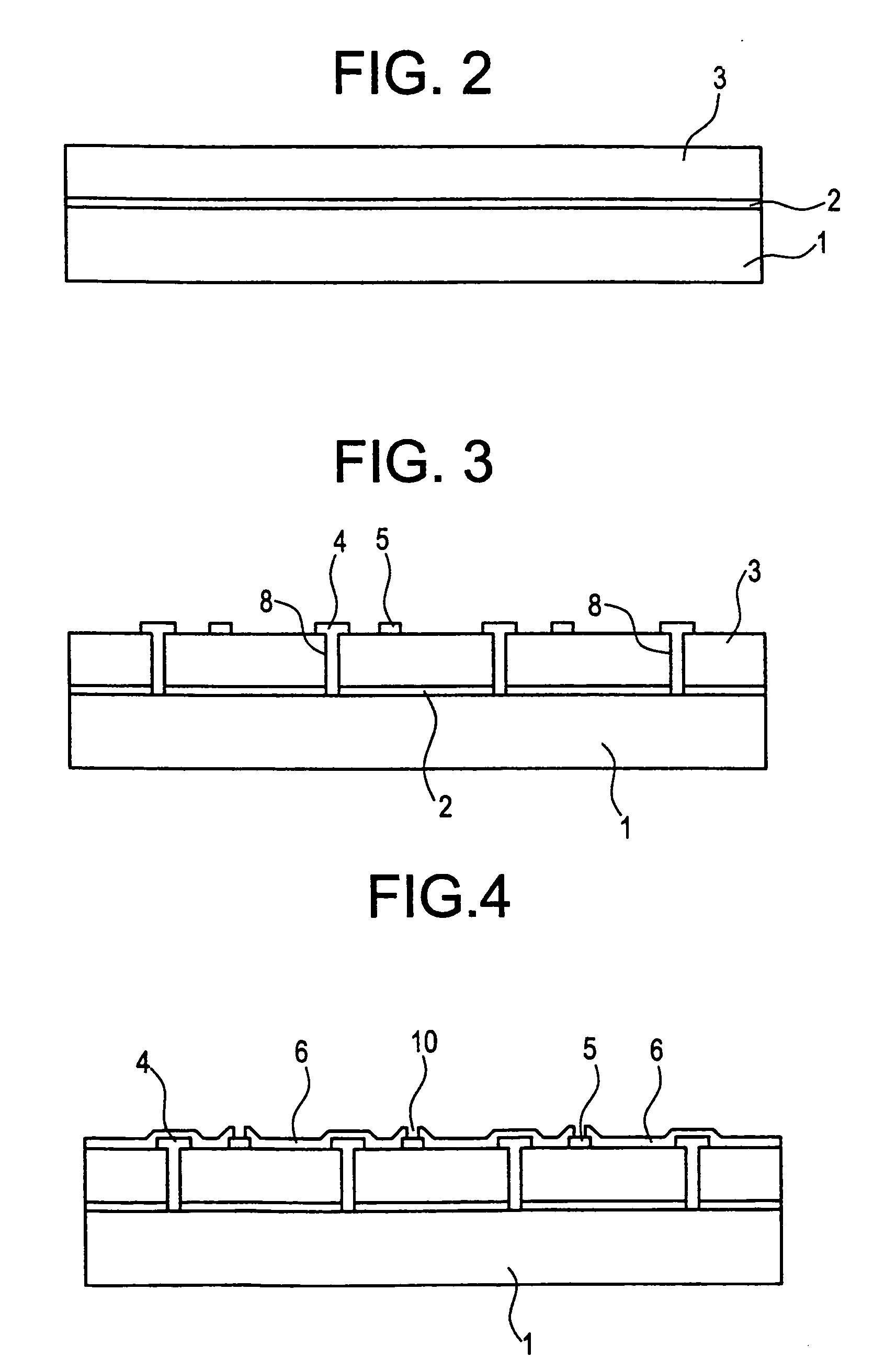Photoelectric conversion device
- Summary
- Abstract
- Description
- Claims
- Application Information
AI Technical Summary
Benefits of technology
Problems solved by technology
Method used
Image
Examples
example 1
[0042]FIG. 1(A) shows an integrated photoelectric conversion device according to the invention. This photoelectric conversion device is composed of a flexible substrate 1 made of plastic film, a first electrode 2, a PIN-type photoelectric conversion layer 3, second electrodes 6, 7, and insulators 4, 5. The insulators 4 and 5 consist of epoxy resin.
[0043]The photoelectric conversion device has photoelectric elements 101, 102, and 103. The second electrode 7 of the photoelectric element 101 is electrically connected with the first electrode 2 of the photoelectric element 102 by a connector portion 9. The device is provided with a first groove 8 to isolate the first electrode of the first photoelectric element from the photoelectric conversion layer of the second photoelectric element 102. The second electrodes 6 of these elements 101 and 102 are insulated from each other by a groove 10 formed by a laser scriber.
[0044]Simultaneously with formation of the second electrode 7 for obtainin...
example 2
[0086]This example of photoelectric conversion device takes a form as illustrated in FIG. 1(B). In this structure, connector portions 12 used to connect the second electrodes 7 with output terminals 13 located on the rear surface of the substrate are formed at the end surfaces of the substrate. Other manufacturing steps are similar to the corresponding steps of Example 1 but the laser illumination steps for piercing the substrate is dispensed with.
[0087]Since the end surfaces of the substrate are used as the connector portions 12, the output terminals 13 are adhesively bonded to the rear surface of the substrate so as to protrude from the substrate. This example yields the same advantages as Example 1 but is able to reduce the number of manufacturing steps. Unlike Example 1, the connector portions 12 do not have limited size. Therefore, the reliability of connection and the production yield can be improved further.
example 3
[0088]This example of photoelectric conversion device takes a form as illustrated in FIG. 1(C). In this structure, connector portions 12 used to connect the second electrodes 7 with output terminals 13 located on the rear surface of the substrate are formed on the end surfaces of the substrate. Unlike Example 2, the connector portions 12 are not made of the same material as the second electrodes 7. Rather, the connector portions 12 are made of the same material as the output terminals 13 formed on the rear surface of the substrate. These connector portions 12 made of a metal are located on opposite sides of the substrate and clamp it therebetween. Other manufacturing steps are similar to the corresponding steps of Example 1 but the laser illumination step for piercing the substrate is dispensed with.
[0089]Each metal clamp acting as one connector portion 12 and also as one output terminal 13 takes a U-shaped form with respect to the cross section of the photoelectric conversion devic...
PUM
 Login to View More
Login to View More Abstract
Description
Claims
Application Information
 Login to View More
Login to View More - R&D
- Intellectual Property
- Life Sciences
- Materials
- Tech Scout
- Unparalleled Data Quality
- Higher Quality Content
- 60% Fewer Hallucinations
Browse by: Latest US Patents, China's latest patents, Technical Efficacy Thesaurus, Application Domain, Technology Topic, Popular Technical Reports.
© 2025 PatSnap. All rights reserved.Legal|Privacy policy|Modern Slavery Act Transparency Statement|Sitemap|About US| Contact US: help@patsnap.com



